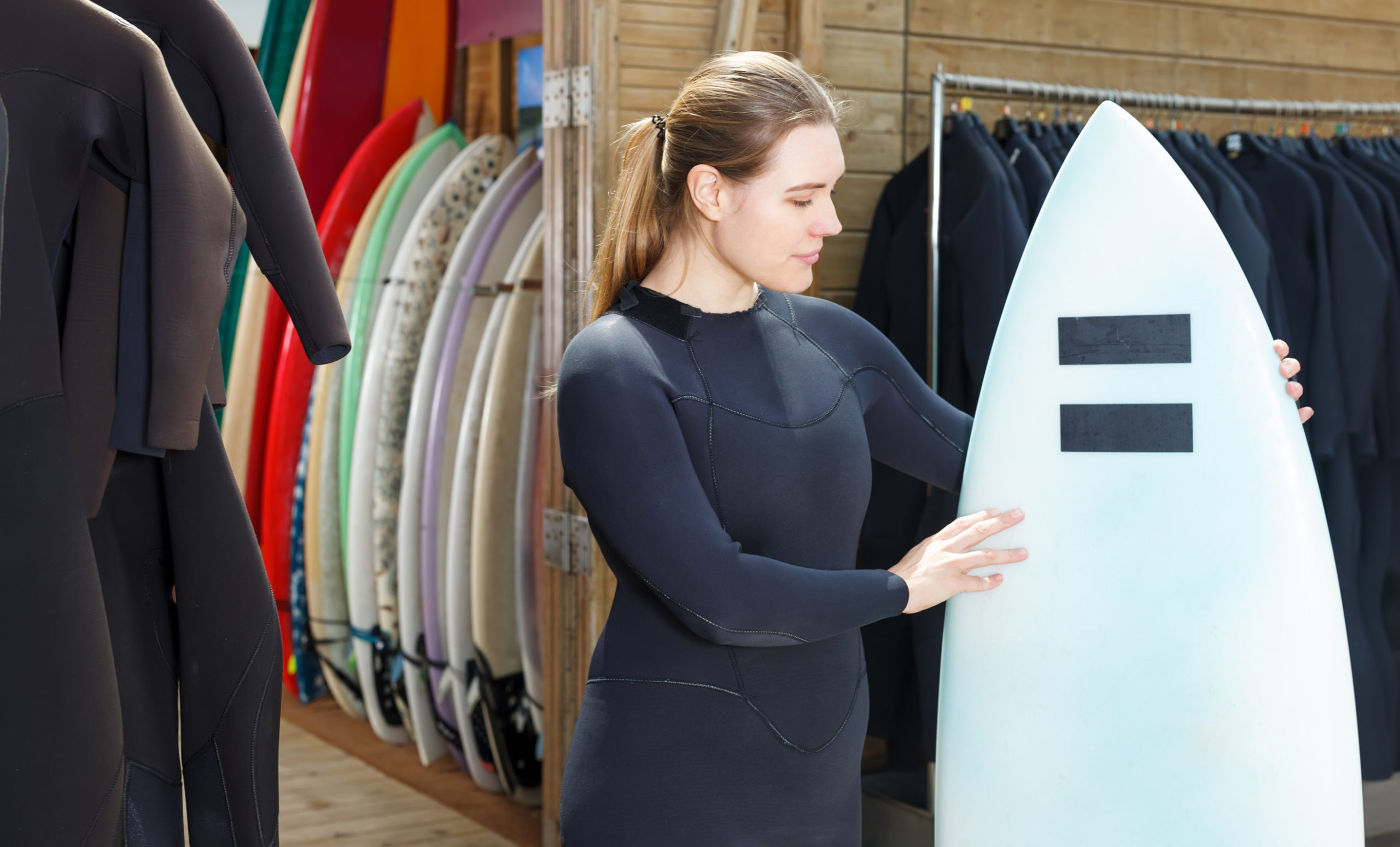As a beginner, buying a new surfboard can both be exciting and overwhelming. Not only are they highly-specialized pieces of gear, but there are many models and designs out there. Fortunately, choosing the right surfboard isn’t challenging if you know what to look for.
Here are some of the essential things to keep in mind when buying a beginner surfboard:
- Choose the right design.
- Calculate your ideal volume.
- Ensure the surfboard dimensions are true to size.
- Select the right fin configuration.
This article will show you the most important things to consider when buying your first ever surfboard. Without further ado, let’s get started.
1. Choose the Right Design
When buying a new board, the design is the most important factor to consider. This rule applies to everyone, regardless of their skill level.
You have to consider how, where, and how much you’ll be using the board and in what conditions. Each wave is unique from the other. And learning each wave and location is a never-ending challenge.
You may drive 5 kilometers (3.11 miles) around the corner to a different beach and end up fighting to catch a wave. As a result, it’s crucial to think about the different sorts of wave scenarios when buying a surfboard.
There isn’t a one-size-fits-all board that’ll work for every wave. Knowing where you’re going to surf can help you narrow down your options. Thankfully, several surfboard models are available, which means you’ll always find one that fits.
Here are some of the surfboard types ideal for beginners and amateurs.
Longboard Surfboards
These boards are great for all-around use and provide better paddle strength and stability than smaller boards. They’re usually around 8 feet (243.84cm) or longer and have a lot of volume, length, and thickness. On a longboard, you’ll catch a lot of waves and gain plenty of experience standing up.
As an absolute beginner you will want to buy a softie longboard – that is a foam board, rather than a fiberglass board. The softie is more buoyant which makes it easier to balance on.
Shortboard Surfboards
A shortboard surfboard is high-performance. It’s probably your best option for sharp and quick turns. Also, it’s preferred by intermediate surfers with some experience.
Shortboard surfboards come in a variety of materials and fin configurations. However, it may not be a good choice for beginners as it won’t provide you with the buoyancy and balance required when learning to surf.
Fish Surfboards
Fish surfboards are typically thicker and broader than shortboards. These boards may be configured with twin, thruster, or quad fins for increased drive or stability. Surfers mostly use them on smaller, mushier days when they need more paddle strength.
Also, several versions have swallowtails to increase their speed, but they lose their maneuverability in the process.
Funshape Surfboards
Funshapes or funboards are a type of surfboard that fall somewhere between shortboards and longboards, letting you enjoy the benefits of both types. They usually measure between 7’2” and 8’6” (218.44cm and 259.08cm) and combine a longboard’s ease of paddling with the maneuverability of a shortboard.
Plus, these funshape surfboards are lighter and easier to control in the water than a longboard, but they’ll still be forgiving when you’re learning. Funboards are also an excellent option for beginners who are more comfortable using a longboard but aren’t ready to start using a shortboard yet.
2. Calculate Your Ideal Volume
After selecting your surfboard design, volume is the next most important variable to consider.
The volume of a surfboard is the amount of space it occupies and is usually measured in liters. It’s expressed as the board’s length x width x thickness and is used to determine its floatation.
Generally, the bigger the volume, the better. More volume means increased buoyancy, which helps you catch more volume. It also gives you more speed and stability.
So, if you’re a beginner or intermediate, you should look for a surfboard with more volume to allow you to generate speed easily. On the other hand, surfers at intermediate to pro levels prefer less volume to maximize speed and maneuverability.
However, a board with too much float can feel heavy and difficult to transition and turn. So, it’s vital to choose the right volume.
3. Ensure the Surfboard Dimensions Are True to Size
After choosing your surfboard design and the ideal volume, the next step is to determine the dimensions.
Typically, the dimensions you want to consider are length, width, and thickness.
The length of a surfboard is measured from the nose to the tail. Most beginners make the classic error of choosing a board that’s too short for them, restricting their advancement and success in surfing.
Three surfboards of varying lengths can have the same volume; thus, beginner boards don’t have to be ridiculously long to be usable. However, as a general rule, bigger is preferable when starting, much like volume.
A longer board will hold a better line in the water, and the additional surface area will make you feel less unstable once you’re on your feet. Wider boards are more forgiving for foot placement and have better durability.
As a beginner, you should be on anything 7 to 8 feet long (213.36 to 243.84 cm) or longer, although you should still be able to carry and steer it out into the water. Too long can be detrimental to your health depending on your height, weight, and abilities.
And as for the width, the wider the board, the better the stability.
The last dimension to consider is thickness. The thickness of a board is the distance between the deck and the bottom at its thickest point. It’s a crucial factor to consider since the thicker the surfboard is, the more buoyant and easy to paddle it is.
4. Select the Right Fin Configuration
The fin configuration is something that many people ignore. As a surfer, you must be aware of your unique surfing style. To pick the proper configuration, consider your stability, control, and speed preferences.
Some fin setups include single fin, twin fin, thruster, 2+1, and Quad. However, the most popular is the thruster setup. It typically consists of a center fin and two outer boxes.
I suggest buying a surfboard with a 5-fin box setup if you want flexibility and easy customization. This means one center fin and two outer boxes on each side.
Conclusion
If you’re a beginner, buying a surfboard doesn’t have to be confusing. Start with the type of design that fits your needs, then determine how big of a board you want. Make sure your board’s dimensions are true to size. Finally, decide what type of fin you want based on your stability, control, and speed preferences.

